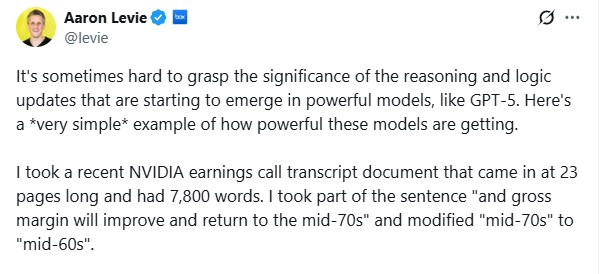I recently came across a tweet that captured something I’ve felt for a long time:
Sometimes the most valuable insights aren’t hidden in obscure corners — they’re sitting in plain sight, quietly ignored.

Original tweet by @macrocephalopod
The author describes finding an unpublished 2015 working paper — not even a preprint — through a Google search using filetype:pdf. It outlined a simple but niche alpha that, even years later, still works and could generate $10M+ annually. It was never published. Just sat there, waiting to be found.
That’s what I call a needle: a specific, overlooked, high-value insight sitting in a field of noise.
The Needle Method (Explained Simply)
The Needle Method is based on a simple belief:
In any dense field of information, most of what you find is noise — but somewhere in there is a signal that changes everything.
The key is to develop your filter. Your lens. Your sense for what matters. Sometimes that means searching obsessively. Other times, it means preparing your attention so well that the needle finds you.
Needles Don’t Always Look Like Insights
Take Elon Musk’s decision to ban the word “researcher” at xAI, insisting that everyone be called an “engineer”. At first glance, it’s a semantic tweak. But look closer — and it reshapes how people behave. “Engineer” signals building, not theorizing. It flattens status, prioritizes doing over debating. That’s the needle: a linguistic reframe that nudges a team’s culture toward output.
But not all needles are uncontested. AI pioneer Yann LeCun responded critically, arguing that conflating research and engineering risks killing breakthrough innovation. Research, he notes, requires long horizons and scientific discipline, while engineering optimizes for short-term execution. So maybe Elon’s needle is double-edged — brilliant for one context, destructive in another. Still, it shows the same principle: tiny moves can produce outsized shifts.
Sometimes the Needle Finds You
One of the best recent examples? From the AI itself.
Anthropic’s large language model Claude 3 Opus was tested by embedding a single target sentence into a vast corpus of seemingly random documents. Not only did Claude find the hidden sentence — it realized the dataset was artificial. It didn’t just find the needle. It recognized the haystack had been rigged. That’s more than retrieval — it’s meta-awareness. A real-world needle experiment, performed by a machine.
Another Striking Needle: In Boring Work
One of the best modern haystacks I’ve seen was dropped in a tweet thread by Greg Isenberg. He laid out a list of painfully boring business problems — copying PDFs into Salesforce, processing insurance forms, replying to customer reviews — and argued that solving any one of them manually, then automating with AI agents, could be the clearest path to $5M ARR.
Most readers will skim that list and nod. But a few will stop and dig. That’s the needle method. You don’t brainstorm your way to the insight. You earn it by doing the grunt work until the pain point becomes so obvious it practically glows. The needle is buried in boredom — and if you’re paying attention, it shows you exactly where to build.
How to Spot a Needle: A Checklist
Not all insights are needles. Some are just shiny distractions. Here’s how to tell the difference:
✅ The Needle Checklist
- Is it buried? Was it hard to find, or easy to overlook?
- Is it precise? Does it solve or reveal one sharp, specific thing?
- Is it durable? Does it still hold up years later — maybe even better than when you found it?
- Is it asymmetric in value? Did it offer huge upside for very little effort?
- Is it self-validated? Did you try it, return to it, or build on it yourself?
- Is it hard to explain? Does it only really click when someone uses it themselves?
Three Needle Hunts, Three Very Different Finds
1. Cephalopod’s $10M Working Paper
The gold standard. A forgotten 2015 finance working paper, found via targeted keyword + filetype:pdf searches, still delivering niche alpha years later. Drama: high. Detail: razor-sharp. A $10M/year opportunity hiding in plain sight.
2. My Tesla Q2 2025 10-Q Scan
Armed with GPT-5, I dropped Tesla’s latest filing into a blind anomaly search. The model surfaced accounting shifts and margin compression… and, yes, a forest of typos. Not exactly Wall Street–moving alpha, but a live test of the method on one of the most picked-over stocks in the world. Lesson: the hunting ground matters.
3. Aaron Levie’s NVIDIA Transcript Test
Levie took a 7,800-word NVIDIA earnings transcript, quietly changed one phrase — “mid-70s” to “mid-60s” in gross margin guidance — and asked various AI models to spot the inconsistency. GPT-4.1 missed it. GPT-5 nailed it instantly. In a real setting, catching that guidance change early could move trades in seconds.

Takeaway:
The needle method is most powerful when:
-
The source is public but under-read (Cephalopod).
-
The signal is high-drama and high-detail (NVIDIA test).
-
The tool can hold the entire context and cross-check for subtle contradictions (GPT-5).
Tesla reminded me that if the field is too trampled, even the sharpest AI will mostly find broken twigs. Pick your haystack wisely.


